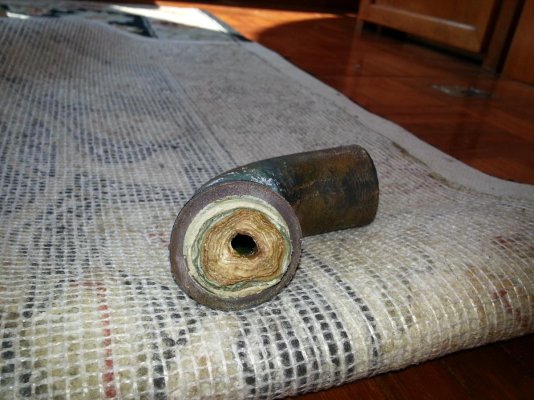R_p_ryan
Senior Member
- Joined
- Dec 11, 2014
- Messages
- 171
- Location
- USA
- Vessel Name
- Shellbourne
- Vessel Make
- 1978 Mainship 34 Perkins T6.354
Is it ever normal to have stream coming from the exhaust? I have a 1978 Mainship with a Perkins T6.354. At WOT I see lots of stream coming from the exhaust. The cooling system is clear and clean, the engine temps are normal using an IR sensor at several locations. The EGT is 900 degrees f at 2400 RPMs, and 450 at 1800 RPMs. I replaced the wet elbow and installed a muffler and the stream persists. This is on San Francisco bay where the water temps are between 55 and 60 degrees. I have felt all around the wet elbow and there are no hot spots after the water injection port. Blow by seems nominal.
The only two pieces that are suspect are the water pump cam and the raw water intake grate on the underside of the hull. Is there a process for testing the raw water output? I've contemplated disconnecting the raw water injection hose at the elbow and seeing how much is getting put through by measuring the time to fill a five gallon bucket.
Also the last impellor came from West Marine. The sales guy just looked at a catalog of templates and sold me the one with the same diameter and number of vanes. I could imagine the stiffness of the vanes could make a difference.
I've heard of hotspots forming in the exhaust manifold than cause pockets on boiling water. I'm about to flush the manifold with Evapo-Rust since it appears to have scaling on the inside. There's a bolt on plate on the side of the manifold. I'm contemplating removing it but I'm concerned the bolts will shear off.
There is also blue smoke continuously but I think my turbo was leaking oil. I've rebuilt it and have not yet reinstalled it.
Thanks for the advice,
Robert
The only two pieces that are suspect are the water pump cam and the raw water intake grate on the underside of the hull. Is there a process for testing the raw water output? I've contemplated disconnecting the raw water injection hose at the elbow and seeing how much is getting put through by measuring the time to fill a five gallon bucket.
Also the last impellor came from West Marine. The sales guy just looked at a catalog of templates and sold me the one with the same diameter and number of vanes. I could imagine the stiffness of the vanes could make a difference.
I've heard of hotspots forming in the exhaust manifold than cause pockets on boiling water. I'm about to flush the manifold with Evapo-Rust since it appears to have scaling on the inside. There's a bolt on plate on the side of the manifold. I'm contemplating removing it but I'm concerned the bolts will shear off.
There is also blue smoke continuously but I think my turbo was leaking oil. I've rebuilt it and have not yet reinstalled it.
Thanks for the advice,
Robert



